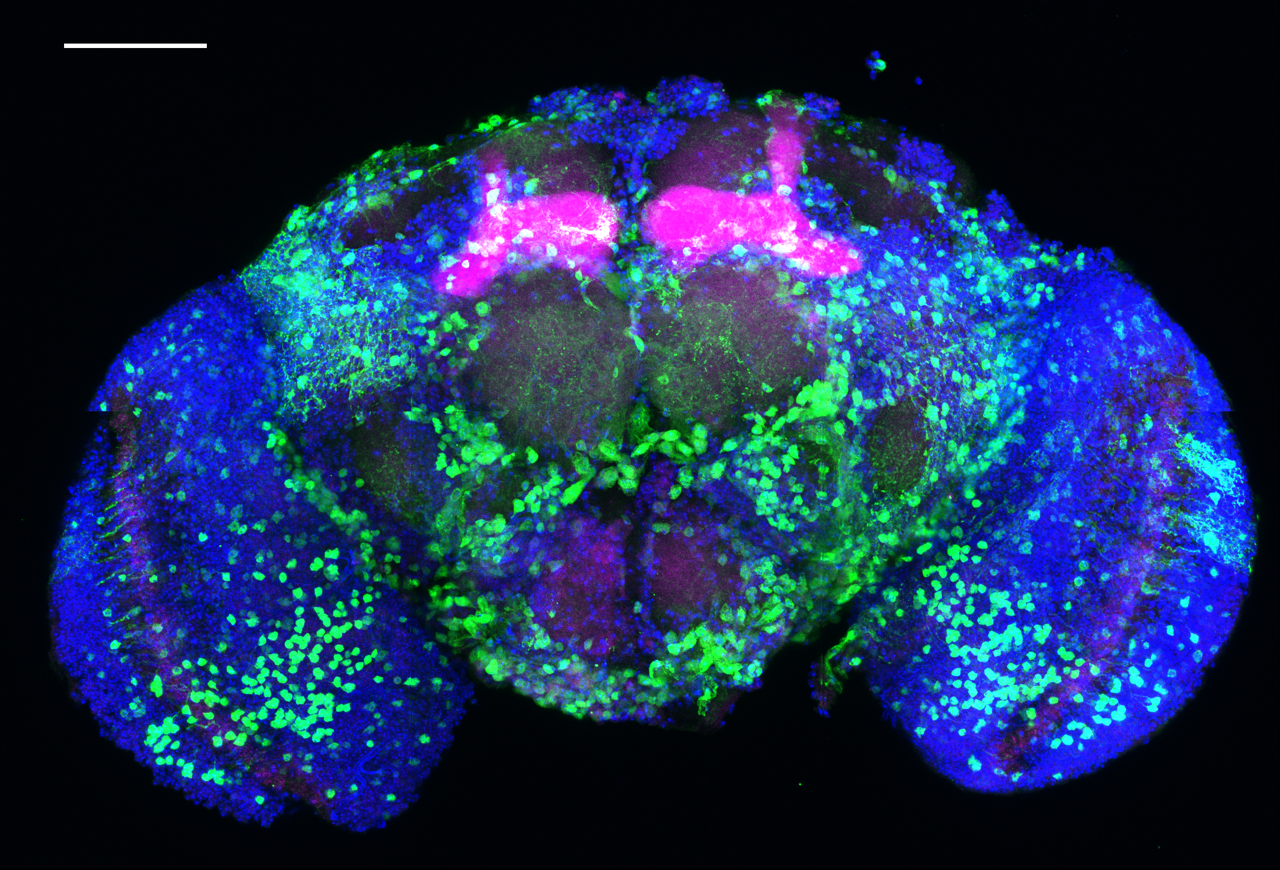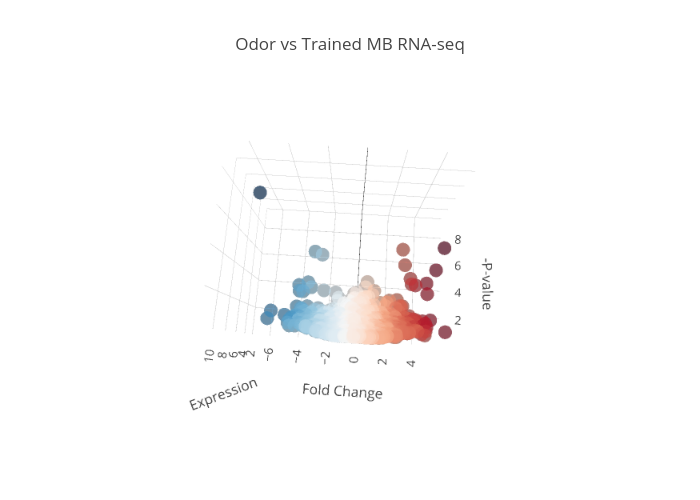RESEARCH
We use Drosophila melanogaster (fruit flies) to investigate how alcohol influences neurobiological functions. The lab's primary research focuses are as follows:
Bioinformatics
Isolating cell-type specific nuclei and performing RNA-sequencing help us see how alcohol exposures influence gene expression. Click on the interactive plot to see which transcripts are more interesting than others in memory-associated neurons of flies exposed to control (Odor) or alcohol+odor (Trained)!

Behavioral analysis
Video recording and free tracking programs allow us to investigate whether particular genes or cellular pathways influence behavioral response to alcohol. Watch the video (turn on audio for full effect) to see how a single gene mutation can influence how flies respond to ethanol vapor! (Red circles draw your attention to highly sensitive and resistant flies.)

Immunohistochemistry
By "staining" brain tissue, we can assess neural circuitry, excitability, and localization of interesting proteins. Here you can see all adult fly brain cells (blue, Dapi), memory-associated mushroom body neurons (magenta, 10B-gal4), and observe how many cells are Notch-active (green, Notch reporter). (Scale bar 50um)


Publications
"Nothing in life is to be feared, it is only to be understood. Now is the time to understand more, so that we may fear less."― Marie Curie
